Description
Building muscle has never been faster or easier than with this revolutionary once-a-week training program
In Body By Science, bodybuilding powerhouse John Little teams up with fitness medicine expert Dr. Doug McGuff to present a scientifically proven formula for maximizing muscle development in just 12 minutes a week. Backed by rigorous research, the authors prescribe a weekly high-intensity program for increasing strength, revving metabolism, and building muscle for a total fitness experience.
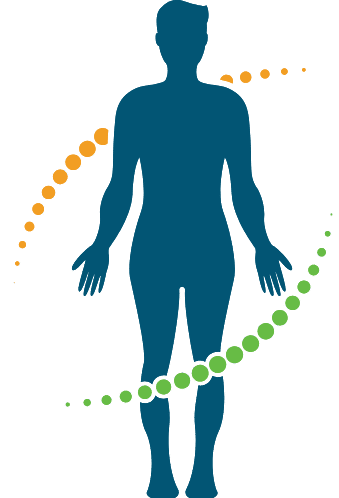
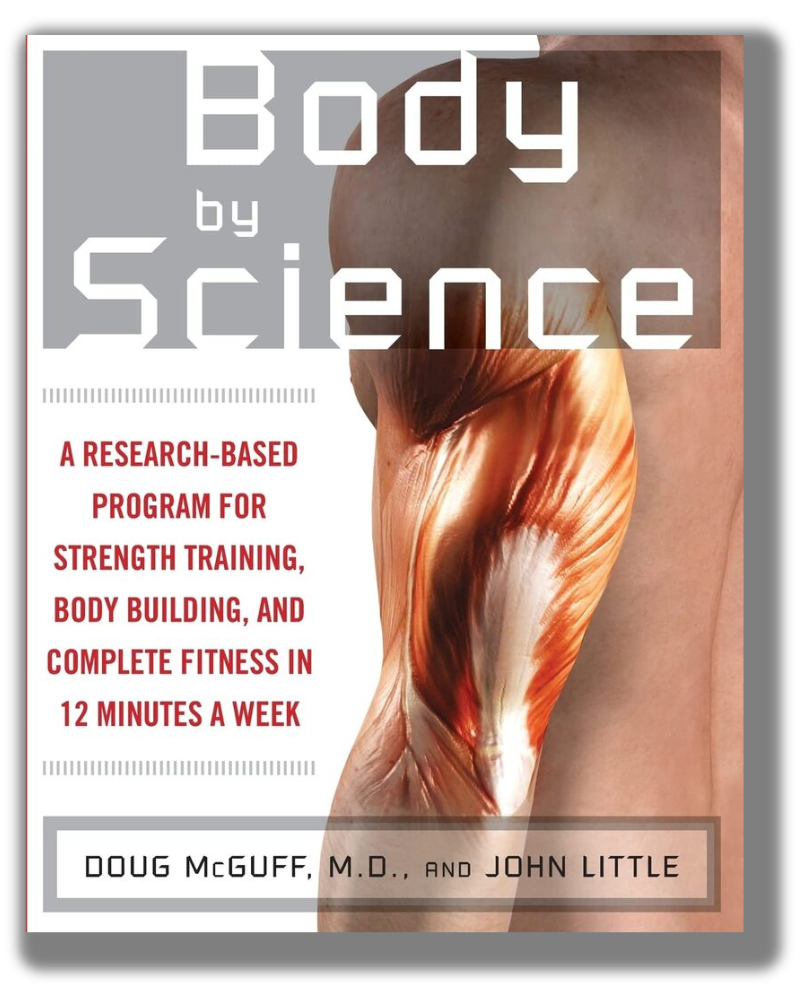
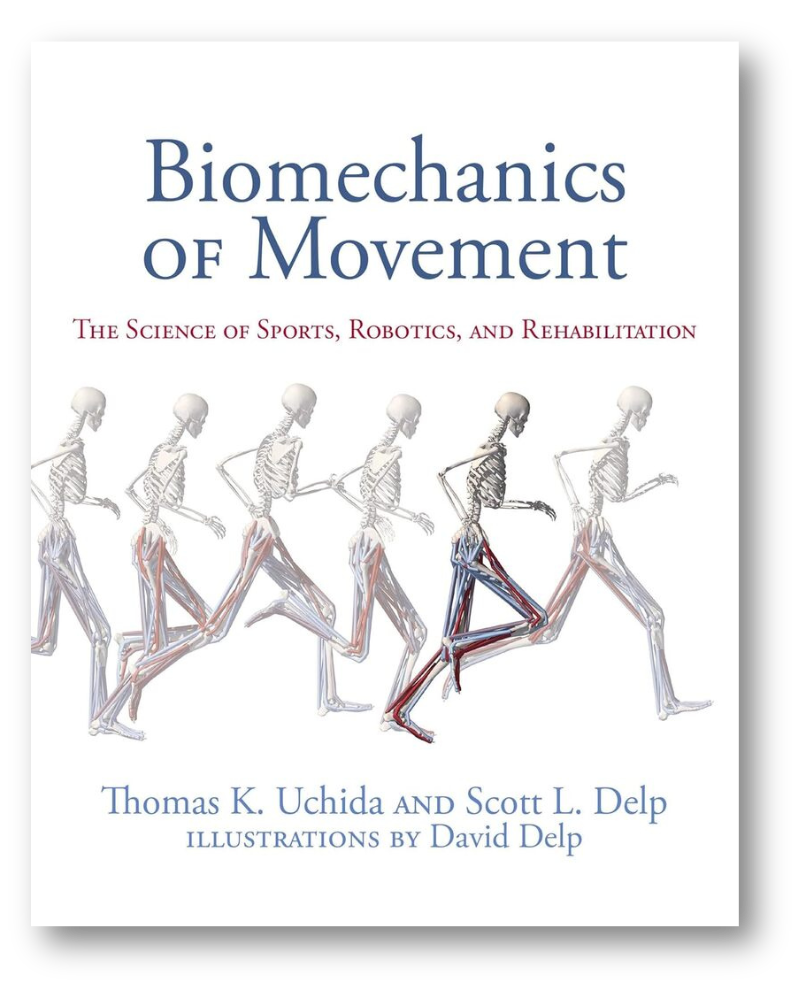

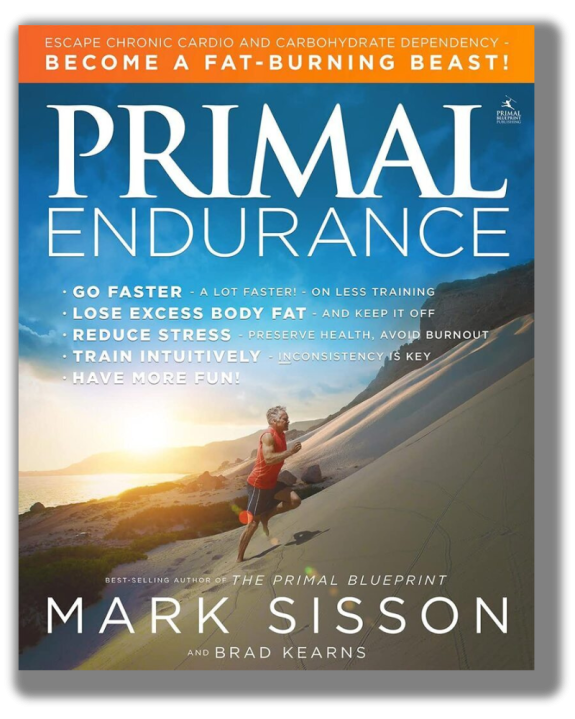
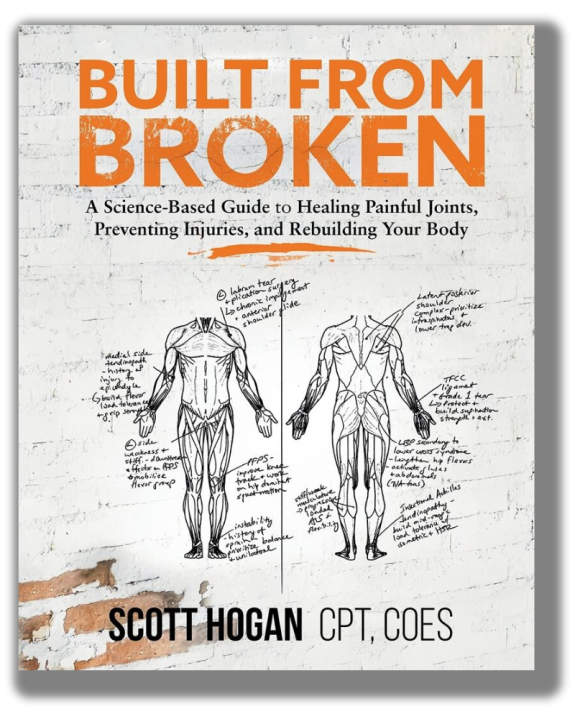
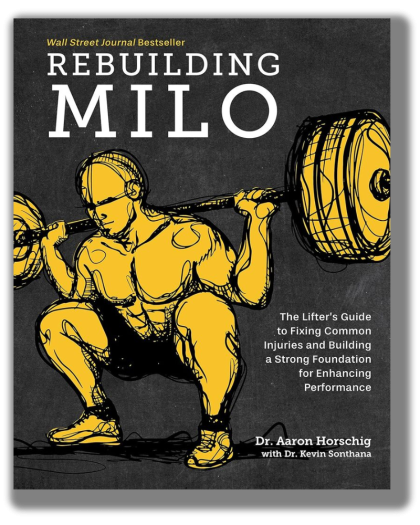

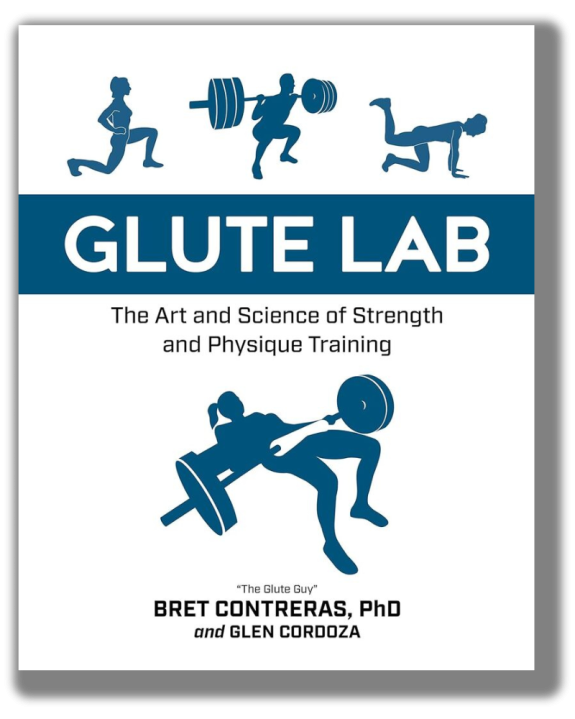
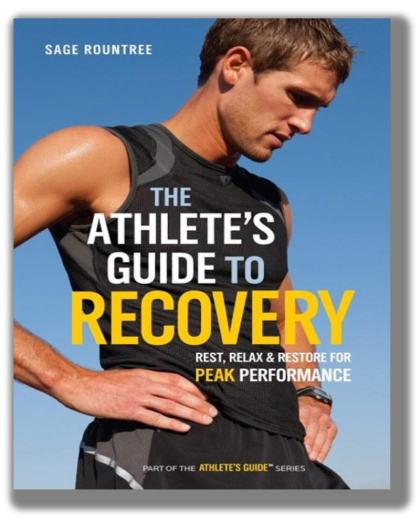
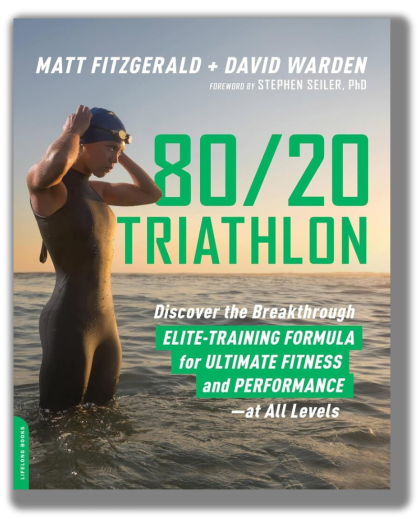

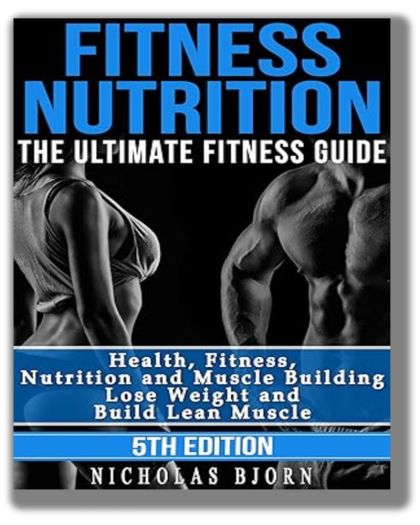
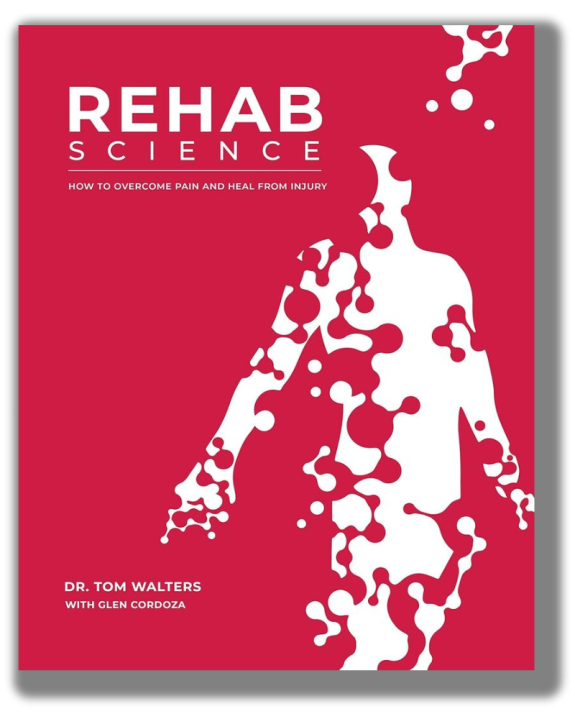


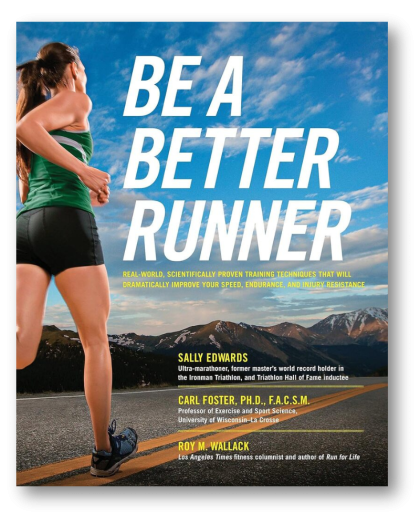
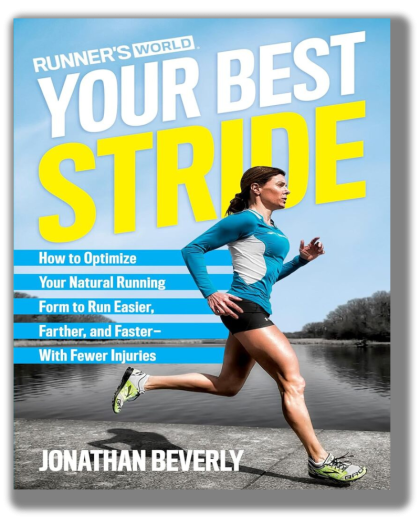
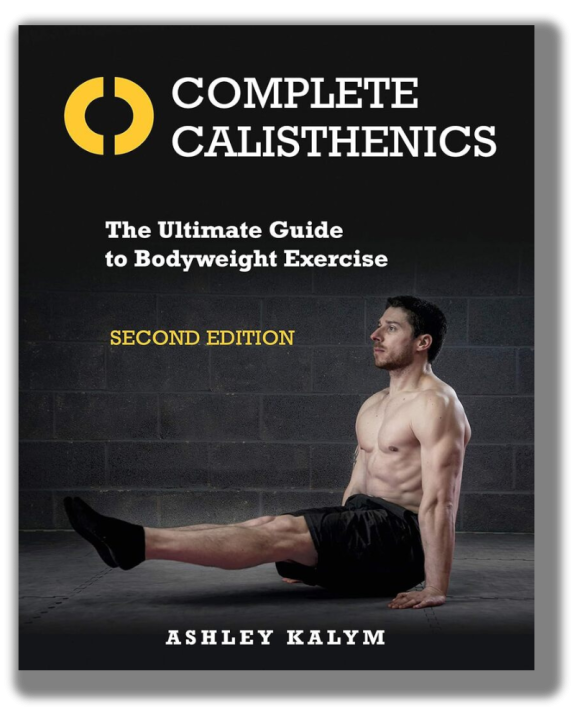
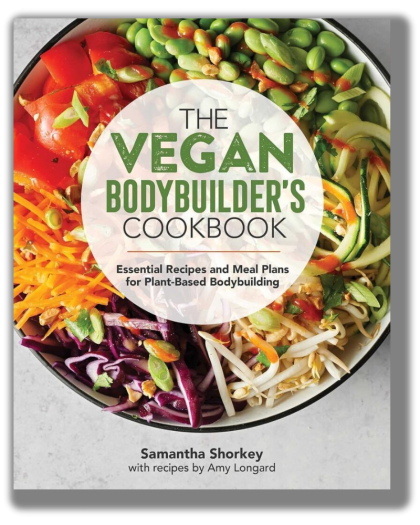
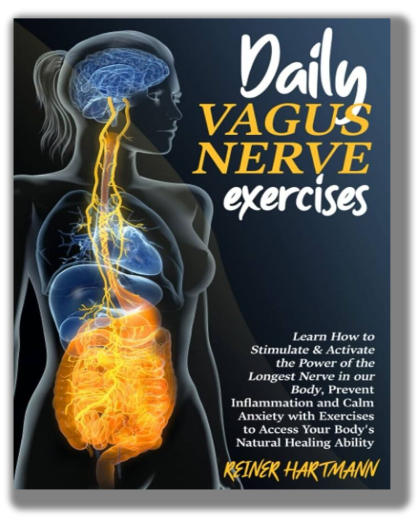


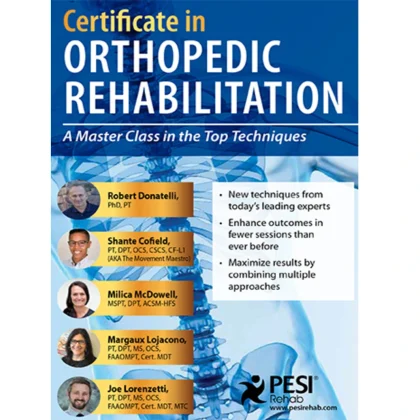

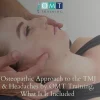
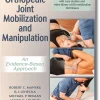

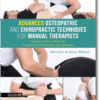
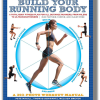
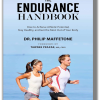

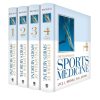

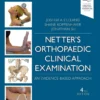
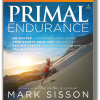
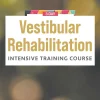
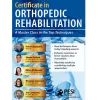
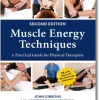
statisticool (verified owner) –
Hi,
This is a great book! Highly recommended.
If you’re interested in strengthening to help make yourself as healthy as you can be, you must do so only in accordance with your joint and muscle function, and do so in a slow and safe manner directly targeting your muscles with minimum momentum to induce maximum stress to trigger changes, using the most safe and efficient tools for the job.
Anything else (cross-training, cardio, weight lifting/throwing, recreation, barbells, strongman competitions, etc.) is inefficient, however you may get fit in spite of such methods.
The message boils down to doing strength training in a slow manner, using strength training machines. This is where strength training is heading anyway, despite a few groups hanging on, mostly because of traditions. Historically, strength training went from lifting rocks, to shot-filled barbells, to plate loaded barbells, and then pulley and plate loaded machines. Then Science entered the picture, and we were blessed with machines with cams, and now the field is quickly moving towards computerized machines and all of their benefits.
This book has an absolutely great discussion of the difference between fitness and health. Fitness would be a powerlifter who can squat 500 lbs. Health, or lack of in this example, would be that same powerlifter has arthritis and a huge gut…So who really cares if he can squat 500 lbs, as his own methods are slowly making him less functional by many measures.
Nowadays, it is easy to be impressed by the glitz of videos showing impressive accomplishments in sporting events, mostly by the genetically blessed, or by videos of people being tired, lying sweaty on the floor after some cardio cross-training, perhaps indicating how ‘bad a$$’ and macho their exercise methods are. Don’t be. Laugh it off. Exercise your muscles rationally for best results. Actually THINK about how you are exercising.
Bob Rosenberg (verified owner) –
I have owned 2 copies of Dr. McGuff’s self published books “Ultimate Exercise” since 2002. Basically I have been using this routine or a derivative since then. I have also had a few phone consultations with McGuff during those years. These are basically the “Consolidated” type routines from Mike Mentzer’s last two published books performed in a Super Slow type cadence.
I agree with all of the routines on the “Global Conditioning” aspect. I myself find that fixing your mind into a once a week frequency becomes fact for you and you may be delighted if you decide to maybe split up the A/B workouts but perform both in one week. You must be very in tune with overtraining but at the same time, not be paranoid and turn it into a Boogieman. Overtraining is not a disease nor is it irreversible. When you find yourself overtraining, cut back. I realize for the High Volume Trainers this is not even an option.
My absolute best results from these routines were in 2007 when I added the Trap Bar Deadlift (done at 2/2 Cadence). This really triggered growth in my body and transferred to all of the other exercises. I was working with 555 pounds on this for low reps (Started at about 365) and did not experience any injuries. This added exercise had to really be monitored because it definitely would lead to overtraining if done along with the other movements.
Lately, I decided to add more exercises and was doing 8 movements once a week and then split it into the A/B (still done during same week) and then used 7 days in between. I have tried 14 day layoffs and I don’t care what any studies show, I got weaker, lost size, muscularity and gained fat. Perhaps it was my diet.
As far as John Little, I have used both Max Contraction Training and Static Contraction Training. Besides being almost impossible to perform in a gym, I did not experience any meaningful gains on these routines and got noticeably weaker and smaller until I ended them. They (Sisco and Little) both adamantly claim that these are NOT isometrics yet the verbatim results of Dr. EA Mueller and Dr. Theodore Hettinger’s Classic Isometric studies of the mid 1900s are the basis for both of these books. the machines that Sisco peddles are basically big immovable platforms on machines with a tension meter attached. There is no outside resistance of any kind. For isometrics, I will use my body and doorway. Since John Little is co-author of Body by Science I find it valid to question his theories.
A serious question I have about John Little’s writings and research is the thoroughly documented and hyped up “Research Programs” like “Nautlus North” always have the subjects making like 200% strength gains after 1.2 workouts yet the experiments never last more than a few weeks (or workouts). He does say in everyone of the books (even the ones he did for Mentzer) “If these people gained that much muscle in just 2 weeks, just think what you can achieve in 1 or 2 years”, The experiments (Nautilus North, etc) will never tell us, they only lasted a few weeks. He did have a special follow up web page for Max Contraction Training but that lasted as long as the experiments. No follow through.
I suspect that John Little is on this book because of name recognition. John puts down the Super Slow protocol in both Static Contraction Training and Max Contraction Training. Also, Quoting from another reviewer “It also strikes me as odd that John Little is giving a strongly implied endorsement to full-range exercise, after all the promotion he’s done for limited range work & static weight holding. Where do you stand, John Little?”
If anyone has made sustained gains from either MCT or SCT I never heard of them. I know McGuff says to use them for just for short periods of time. I would discard the MCT training totally. I believe John Little will just squeeze his SCT and the “even more revolutionary” MCT anywhere he can. If you gave SCT and MCT a try, you will have discovered that MCT was a method discovered for Little to distance himself from Sisco rather than a revolutionary form of SCT.
With that being said, I HIGHLY RECOMMEND this book especially for the insight in Global Conditioning and the Faux Cardio Culture. I would have enjoyed it more without John Little’s 2 cents (Revelation that he can apply his son’s 3-way Mentzer Routine to his Max Contraction Training and other Anecdotes) but then again, he may have Tony Robbin’s endorse it and make an entire science, philosophy and religion out of it complete with 30 minute infomercials a 20 DVD set and the ability to walk over hot coals at completion.
Seriously though, this book is a big notch for H.I.T. and I totally respect the education, research, personal training experience and passion that Dr. McGuff put into it. As I first stated, I have had phone consultations with him and have nothing but praise and respect for him. His insight on the medical aspects of strength training put him in a different class than most writers.
I also recommend Ellington Darden’s “The New Bodybuilding for Old School Results” as a companion volume. Darden’s book provides inspiration which really makes you want to hit the vintage Nautilus machines. Ellington Darden also recommends more movements per workout (about 8) and higher frequency. I say the reader experiment what works best for them and then adjust volume and frequency accordingly over time.
Both of these books together provide history, nostalgia and research. They do not contradict each other but compliment. A Yang to the other’s Yin. Finally, if you can find a copy of Dr. McGuff’s self published “Ultimate Exercise”, I would snatch this up.
laser_mechanic (verified owner) –
The theory on the metabolic energy pathways is excellently written. Obviously most ‘trainers’ are not well versed (if at all) on this and simply regurgitate what they are taught in the ‘certification classes’. Dr. McGuff is a physician with real-world experience in athletics and strength training. Ken Hutchin’s Super Slow philosophy is the foundation for this exercise treatise.
I prefer 2/week full body workouts, that seems to work fine for me, although with more intensity and a coach, I am sure one/week would be sufficient (I have found it harder to work alone than with a coach but I believe I know more about exercise than most trainers).
Hopefully the book’s drawings will be improved or replaced by pictures in the next revision.
Update 13Oct2013:
I am doing less structured workouts since I have most of the protocols I use memorized; some days I do a single, “superslow” set bodyweight only (except squats, 45 lb barbell or gobblet squat with kettlebell), or a 3 rotating set workout of squats, pushups and pullups, 8 seconds (4 and 4) so shorter variation of the super-slow single set protocol. I feel better with 2, sometimes 3 workouts/week; the main thing is to leave at least 2 days’ rest between strength training sessions.
On days I do not lift I do a stationary bike “tabata-like” routine of 30 secs sprints, 15 secs rest for 8 repetitions; it bombs the legs and has given me excellent endurance for intense activities such as grappling, rock climbing, etc.
. (verified owner) –
This book does a great job of debunking every bodybuilding myth I’ve heard of, but it creates a few myths of its own : 1/ Recommended 60/90 seconds under tension may be good for combined strength, mass, & cardio-vascular fitness, but it’s much longer,(& must be done w/lighter weights), than optimal for building mass: Longer times to failure may not be limited by the failure of contractile fibers to keep working , but rather lactic acid build-up. W/heavier weights/shorter times come to failure before lactic acid build-up. 2/As safe & effective as slow reps are, there’s a diminishing return after slowing down as much as recommended. This has been shown in studies where slightly faster work actually came to failure in less reps. Somewhere in the slow reps seems to be some unaccounted for rest. 3/ Going to failure & taking whatever days off are needed is a good way to ensure progress, but going a bit short of failure, taking less days off, & acummulating more work days adds up to faster progress. It also strikes me as odd that John Little is giving a strongly implied endorsement to full-range exercise, after all the promotion he’s done for limited range work & static weight holding. Where do you stand, John Little?
J. Storey (verified owner) –
There has been a lot of buzz over this exercise concept during the last fifteen years or so, with a gaggle of books out hyping the idea that slowing down rep speeds during resistance exercise is the “best” way to exercise, bar none. Readers have probably seen many titles promoting variations of this theme, such as “The Slow Burn Fitness Revolution”, “Power of 10”, and so on. Slowing down concentric and eccentric reps is not a new idea, it probably goes back over a century (heck, maybe even back to Cro-Magnon times, Fred Flintstone probably experimented with it), but the idea really started taking off due to the efforts of Ken Hutchins promoting his “SuperSlow” (TM) protocol in the 90s and beyond. Soon thereafter, SuperSlow “Zones” starting branching off from central Florida and appearing in various cities around the country, offering very short workouts twice a week for people “short on time”. Certainly there were lucrative business opportunities here…
Mr/Ms. Average American never has any time, except 6 hours of TV a night, and certainly does not like to move more than required, so these promises of “20 minutes, twice a week”, or in the case of Body By Science, “12 minutes a week”, certainly appeal to folks who want to get in their 12-20 minutes and get out. The trouble is, slo-mo training is painful, which unfortunately tends to hurt long-term compliance. Bad for business.
So what is so hot about slowing down rep speeds that encourages its proponents to hype it as the ultimate form of exercise? Indeed, many of the staunchest proponents say no other form of exercise is necessary, especially steady-state aerobics. Most slo-mo proponents actually poo-poo ANY type of cardiovascular training, even HIIT interval-training that has been shown to be very effective in numerous studies. Ken Hutchins is well-known for nixing cardio, especially. And in this book, Dr. Doug McGuff echoes the same theme, viewing any cardio as probably unnecessary or even worthless. Certainly it is fair to say this is a minority opinion among exercise physiologists and researchers in general, and the actual scientific literature usually points out a synergistic effect of combining strength training with some type of cardio. Indeed, these are two separate modalities of training that produce different physiological effects on muscle tissue, glucose transport, insulin sensitivity and so on; each form of exercise affects these parameters in different ways. It is difficult, therefore, to buy the SuperSlow arguments that only one form of exercise is necessary (i.e., muscle strengthening), or that slo-mo strength training should *replace* all cardiovascular work. Hutchins and Co., in fact, have received a huge amount of backlash from exercise experts on this idea of “all cardio is worthless”. The idea that the only form of exercise that is worthwhile is “strengthening muscle”, which all of the slow-mo proponents spout, is a creative re-visioning of the term “exercise”. And it is an idea, if taken to the extremes that McGuff does, that has zero support in the clinical literature. I have gone over some of the limitations of exercise done ONLY above the anaerobic threshold in another review (interested readers can read my comments in a review of Craig Ballantyne’s “Turbulence Training” system; his book is entitled “Just Say No To Cardio”). I submit a different working definition of “worthwhile exercise”, which is more in tune with the goals everyone should be looking for: “that which in general decreases low-grade systemic inflammation and oxidative stress, and improves one’s endothelial health, insulin sensitivity, and lean muscle tissue.”
Yes, weights are important, especially for that last component. But weights aren’t necessarily superior in promoting some of the other parameters, alas. Saying weights produces superior results, say, in insulin sensitivity to traditional steady-state aerobics, is selectively ignoring a lot of clinical research. And that should be a problem for an MD like McGuff, who only sees the anaerobic side of the picture. Defining your goal (narrowly) to only “muscle exertion” completely ignores the role of type-I oxidative muscle fibers -not to mention the role of fatty-acid metabolism- in fitness and health, and McGuff’s biased presentation on this point should be pointed out. Readers-ask yourselves here- do you know anybody who certainly has some serious muscle mass, yet gets out of breath doing simple routine tasks? I certainly do. In fact, in my observation, the situation is common among muscle-heads. Fact is, some of these folks are NOT training in a balanced manner, regardless of what “experts” like McGuff are telling you about the superiority of intense muscle exertion. Quite clearly, this should be a warning flag that there is something wrong with this scenario. We can’t really make the excuse that we are only talking about “specificity of training” here when someone can’t even perform simple sustained tasks without being breathless, can we? Obviously, the problem is more general: a complete lack of conditioning of the cardiovascular sytem.
I also have a problem with the slo-mo proponents trying to use studies done on HIIT (i.e., interval or sprint-type exercise) to justify the methodology of slo-mo weight training. True enough, both these forms of exercise utilize “muscle exertion” and very high intensity, but, for example, is one prolonged set of the leg press really the same as a series of bicycle sprints? For McGuff and Co., since their premise is that muscle exertion is the key here, and both these examples utilize the leg muscles in high-intensity exertion, we could substitute one for the other and get equal results. Well, this premise is something folks should be questioning; are we really looking at an apples-to-apples comparison? If you just read what McGuff and his slo-mo buddies are saying, one should be able to freely extrapolate the results of studies on HIIT to a slo-mo session on weights. McGuff and his slo-mo friends love those studies on interval training, such as the famous Tabata protocol, or the recent one where subjects sprinted all-out 30 seconds, 4-6 times per session, three times a week. Is that exactly the same as doing McGuff’s routine in his book? In his paradigm, these are all similar examples of “high-intensity muscle exertion” and should produce the same results….I say, reader, beware of invalid comparisons. Certainly the burden is on McGuff and Co. to produce the evidence; there isn’t anything in the exercise literature, to my knowledge, that compares HIIT “sprints” with McGuff’s slo-mo routine and gets equal results. And that is the problem here- McGuff has his theory and is making some questionable comparisons with no real published data. (And I won’t belabor the point that most of these HIIT benefits were typically a result of sprint-type-training 3 times a week, which McGuff says isn’t necessary). Slo-mo fans, if you know of such studies, please provide us readers with the data. Otherwise, we need to take this borrowing of HIIT “sprint” results with a large grain of salt.
But enough on the anti-cardio sentiments seen in these books. Let’s comment briefly on the results claimed by slo-mo proponents. This book, Body by Science, certainly offers many arguments supporting the idea that slo-mo training (in this case, intense 10-second concentric with 10-second eccentric reps) is valuable in a variety of health areas. I won’t argue with these claims, they are supported by numerous studies involving resistance exercise in general, and there is no reason to believe the particular protocol offered by McGuff and Co. would be any different. Where things start to go wrong here, however, is when slo-mo proponents claim their methods are *superior* to any other type of resistance training for producing these results. Proponents are usually fond citing a couple studies by Wayne Westcott that seemingly “showed” superior results for slo-mo training, but these studies have been reviewed by skeptics and have received criticisms, which would make them interesting studies but of questionable worth. Other studies have compared slo-mo with more traditional training protocols and found the slo-mo methods inferior. I guess it boils down to which studies you want to select to “prove” your point.
And what is with this “10-second concentric, 10-second eccentric” hype? Is there anything magical about “10 seconds”, as if we’ve suddenly discovered the gospel of resistance training now? The claim, of course, is that by demanding long periods of what exercise geeks call “time-under-tension”, muscles receive a maximal amount of microtrauma, and therefore, long extended-reps produce the best muscle gains. While there is some truth to the idea that extended periods on reps produce greater microtrauma, especially on the *eccentric* portion, there isn’t any documented literature supporting the protocol of 10 seconds being anything magical. Why not 8 or 6 seconds? Heck, if 10 is good, why not 50 seconds each direction, using a weight so light a parakeet could lift it?
As a case in point on the folly of drawing premature conclusions on rep-speeds, which is hardly an exact science, a recent 2009 study compared a typical 2-3 second concentric plus 2-3 second eccentric cadence, vs. the same eccentric period but only a 1-second (explosive) concentric. What did they find? The latter actually produced better results mass-wise.
Well, this is getting long so let us sum up. Is slo-mo training actually worthwhile? I think it is. The observation that most weight lifters use too much momentum certainly strikes home- just observe the guys in your local gym bouncing heavy weights up off their chest, etc.. So using slo-mo reps certainly teaches one to pay more attention to the quality of one’s reps. Slowing down the eccentric portion, specifically, is valuable in producing optimal microtrauma, which means more lean muscle during the rebuilding process. Which leads us to another good observation. The argument from slo-mo proponents that most folks lift too much per session, and much too often, is certainly valid. Better recovery is a strong argument, considering how much the typical weight enthusiast trains… Plus, all of the health benefits of weight training in general, as laid out so well in this book, argue that weights, particularly a HIT (high-intensity) protocol, should be an essential part of anyone’s exercise program.
Negatives? The hype over very long reps being somehow “superior” to traditional forms of weight training is certainly questionable. Just because slo-mo training CAN produce good results, as HIT guru Drew Baye has observed, it doesn’t follow that the results are necessarily superior to other rep speeds… Also, we don’t have space here to discuss slo-mo claims to improve sports/athletic performance, which is an area where often explosive movement needs to be trained specifically as part of the skill-set. Specificity-of-training is an important physiological concept, and slo-mo doesn’t really address these sports concerns well, as critics have pointed out.
So, is the book worth buying? Yes. But go light on all the hype.
Gretchen P. Johnston (verified owner) –
I had read “Power of 10” by Zickerman and was intrigued by the prospect of a once-a-week workout but wanted some more meaty information. I ordered “Body by Science” after reading the very thorough reviews posted here, and found it hard to put down. I have done a small amount of weight training in the past and find that my body usually responds well to it. Knee pain has made it difficult for me to exercise in my usual ways (walking or running) and time and energy constraints have made it difficult to get into any kind of a routine. (I own my own business painting houses, which is very physically tiring work)
Everything about “Body by Science” resonated with me. I’d actually been doing a workout adapted from “Power of 10” for about 4 weeks but after reading about the “big five” I switched to rows, lat pulldowns (with my palms facing up), squats, bench and shoulder presses. The first day I tried these I worked so hard that I had to lie down for awhile. . .my muscles were too shaky for me even to drive my car. I was glad I’d read that sometimes it even takes longer than a week to recover, because the next week I could only do a couple of reps each of 2 sets. But by the third week, I was eager to lift again. I’ve been following the protocol as closely as I can. (By the way, I do have a Marcy Smith weight cage and full complement of free weights in my dining room! : )
The bottom line for me is this: over the past 6-8 weeks of doing “Power of 10” and “Body by Science”, this middle-aged, overweight woman is feeling muscles everywhere, even at rest. The best part for me is that for a few years now I haven’t been able to stand up from a low seat without pushing off with my arms. About a week ago I noticed that I can now stand up without using my arms. . .and without the huge “groan” that used to accompany that procedure.
Best of all. . .a 20 minute once-a-week workout is something that I can and will actually do. My body feels good and strong. Now I just have to start following the nutritional advice (sigh.)
Susanna Hutcheson (verified owner) –
This is a dynamic, very unique fitness book. It strips away the myths of fitness and weight loss and replaces it with true science. Turns out all the running and lifting we’ve done over the years has only injured us, made us unhealthy — not built us up, made us fit or made us healthy as we had hoped.
Rather than make us a more healthy population, the fads of aerobics and running, among others, the authors argue, has made us far less healthy.
“The important distinction is that exercise is purposefully directed activity that stimulates the body to produce a positive adaptation in one’s level of fitness and health. Physical activity in general, while yielding the potential to produce certain adaptations in one’s fitness and health, can unfortunately also undermine one’s health.”
We also read, “In reality, fitness and health are not extrinsically linked; as one goes up, the other does not necessarily go up with it.” I found this a very important point of truth.
“Almost every form of exercise other than proper strength training carries with it a good chance of undermining your health because of the accumulated forces involved,” the authors say.
We learn that less is more if it’s intensive. “On June 6, 2005, CNN reported on the startling (to some) findings of a McMaster University research group, proclaiming that “six minutes of pure, hard exercise once a week could be just as effective as an hour of daily moderate activity.”
Now we know that in just a few minutes a week, anyone, at any age and in any condition, can grow strong, can function a their peak and actually enjoy good health as a result. Moreover, you can lose body fat doing high intensity training in a few minutes a week. Spending hours on machines, lifting and running are not only unnecessary, but bad for you.
I didn’t like the fact the author pushed the Natalus machines. Turns out, he owns a Natalus center. Moreover, he assumed everyone went to a gym to workout or had someone with them when they worked out. It didn’t adequately address the person who works out alone in his home. He also didn’t address other forms of resistance, such as rubber tubing. After all, the body doesn’t know if you’re lifting a bath tub, weights or rubber tubing.
I do this program with great success and I use free weights and rubber tubing. My doctor stared at my back and was amazed at the muscles. “Your back looks so powerful and like it should be on a young person,” he said at my last exam.
It’s wonderful to be able to workout for twelve minutes or so once a week and get all the great benefits, including a great cardio workout.
The authors say, “. . . there is no additional advantage in devoting hours per week to the pursuit of health and fitness improvement.”
Since I hate cardio and especially hate what it’s done to my knees, I appreciate the fact that cardio as we know it is both unnecessary and harmful.
“Four thirty-second intervals of high-intensity muscular exertion is four thirty-second intervals of high-intensity muscular exertion, whether that takes place exclusively in the lower body, as in stationary cycling, or in both the upper and lower body, as in resistance exercise.”
We learn from the book that the center of metabolic health, then, is not the heart and cardiovascular system; it is the muscular system.
“The higher the intensity of muscular work, the higher the degree of cardiovascular and respiratory stimulation.”
I read this book twice. I just finished a second reading after a year or so and got much more out of it than in the first reading.
The science is there. It’s proven to work. I personally know it works. I may not agree with every single thing the authors say. But I know this program works.
“The Big Five is a protocol that has a scientifically validated track record of success.” Indeed it is and it can be done by just about anyone of any age.
Highly recommended.
– Susanna K. Hutcheson
Thomas J. Austin Jr. (verified owner) –
I was working out 3 days a week for about 2 hours a day for about a year with no noticeable gains in strength or stamina. I was running, jogging, walking, lifting weights, swimming etc etc etc…. sure I got better at running and such eventually but I still felt like crap. I still had nothing to really show for my work.
a friend started doing this program and sent me a basic over view of the workout routine and asked me to try it. I only did it for 4 weeks and each week I saw decent gains in strength (either more reps or more weight or more time per set). I ordered the book read it cover to cover and have not looked back since. 10 minutes once a week. I am getting in the best shape of my life and it only takes a few minutes out of my week?!
I would also like to point out that the book suggests against normal cardio and I can see why. your blood gets pumping just fine after this workout. more importantly once you start feeling good about your physical shape you are much more likely to take up sports and hobbies that get you cardio done just fine. I have taken up kayaking, rock climbing, cycling and hiking. 2 years ago I was 280lbs and could not climb a flight of stairs without feeling like I was going to pass out. I am down to 210 (I am 5’11”) and still making great progress both in fat loss and building muscle.
I coupled this program with the information from “How I lost xxx lbs .pdf” from Rob – […] and the paleo diet. Been going great so far.
oh as for numbers I will give you a brief example. when I started this program I could only do the leg press (squat machine so my weight + machine weight) @ 60lbs for 8 reps to failure 6 months later I am doing 400lbs (max on the squat machine I am using) and failing at 18reps. I need to find a new machine to work my legs on…. yeah this program works… no question about it.
thanks
Thomas
Paul (verified owner) –
As a 64 year old male that had lost 90 pounds in the last year, I was disappointed to find out that I had “no” upper body strength! My quest for reversing that (sarcopenia) led me to BBS. Months later, I still re-read chapters to better understand the physiology involved.
I found a city rec center where I can do The Big Five plus some extra bicep curls. On the seated row machine I increased my strength 400% in six weeks. Averaging all machines and the curls, I am up 85% in seven weeks. I look better in the mirror and am gaining weight while losing fat, per calipers. In other words, more lean body mass. My diet is 90% paleo.
I did do a modification of the protocol. I do one rep going for exhaustion at 60-90 seconds. I recently added a second rep to exhaustion of any duration. I’m in and out of the gym in under 20 minutes. I feel like I had a near death experience!
If I have any complaint about the book it is lack of segue, moving from theory to practice. That gap is how I inadvertently wound up making my own isometric variant of his protocol.
I can’t speak to if this is the best system for bodybuilders or power lifters. But for the average Joe just wanting to gain strength and looks, it can’t be beat.
Dennis A. Brown (verified owner) –
I purchased this book several years ago and used this method for over a year with excellent results. Having come back and read the reviews of the book, I would like to clarify several misconceptions:
This Exercise program is designed for two types of people:
1. People already involved in a very active lifestyle, and
2. People who are not capable or interested in spending a large amount of time in the gym.
For people in the Group 1, the authors insist that fitness is best achieved using the S.A.I.D principle; that is, Specific Adaption to Imposed Demands. They teach that fitness for any sport is best achieved by direct participation in that sport or performing sport specific drills. Their weight program is designed to supplement the sport program and is intended to maintain or increase strength while participating in the program. One is able to focus most of their time on the sport specific training without sacrificing a lot of time in the weight room, since a minimal amount of time is actually required to maintain or increase strength. Dr. McGuff uses specific examples of his BMX training as well as examples from other sports to illustrate how the program is meant to be used to augment sports training.
Long distance runners who want or need a higher level of cardiovascular training are not discouraged to “supplement” their strength training with long distance running or sprints. In fact, it is the other way around; those people who need or desire a high level of cardiovascular fitness do not need to sacrifice a lot of training time in also developing or maintaining a significant level of strength.
For people in Group 2, this program greatly reduces the amount of time spent in the gym while still producing the primary goal of increasing strength and providing a moderate level of cardiovascular fitness. It meets the needs of the elderly and very sedentary people in teaching them it does not take a large volume of exercise to achieve a moderate level of strength or fitness.
The authors never indicate that this type of training program is meant for bodybuilders. Their primary interest is fitness.
I hope this clarifies things.
Konrad Graf (verified owner) –
The authors argue that 12 minutes a week is not just invented for marketing hype, it is literally the best program they have found for increasing strength and conditioning long-term (and the marketing people at the publisher then of course picked up on it).
They make a case for viewing exercise as a form of medicine that can have an optimal dosage range for the effect sought. The high intensity of their program is potent, but optimal, medicine and requires a substantial recovery period during which the body can make the adaptations that are asked of it in those 12 minutes. Doing this kind of training longer or more often would simply render the body unable to fully adapt to the workout and essentially become a waste of time. There is individual variation of course, but a week is the typical best recovery time from this workout that has emerged out of practical experience working with large numbers of people using this program over years.
This is a worthwhile volume in a powerful genre that combines good biochemistry knowledge with practical experience in actually training large numbers of human beings in a healthful direction (not just one or the other). One of the authors is a physician and both run gyms specializing in the methods they present in the book. They explain the foundations for their program in muscle and energetic biochemistry in appropriate detail and explain the program itself in sufficient detail that one could reasonably start on a version of it after reading the book and accessing the required equipment. They discuss in the final chapters how their program relates to other sports and how it has proven equally good for all ages, especially perhaps, the elderly.
The authors make the case that a short burst of very high-intensity strength training done no more than once a week creates the greatest adaptive response not only in the muscles, but in the entire energy system (so called “cardio”), than any other form of exercise. Thus the cost/benefit picture for this approach is very favorable compared to other forms of exercise if improved health and capabilities are the goal. Moreover, this program should be particularly helpful with body composition due to the way it draws out stored muscle glycogen to greater depths, including in those last-ditch “emergency” muscle fibers that we do not normally access, therefore greatly increasing insulin sensitivity and glucose uptake in muscle cells for days after that single workout.
On the downside, I found the anti-running thread weakly argued. I can sympathize with anti-“running,” wherein “running” is understood in a conventional way, as the authors do, as essentially a practice of chronic mis- and over-training of a basically unhealthy form of movement, that is, heel-strike running performed in highly unnatural “running shoes.”
The conventional way, however, is hardly all that is to be said for running. There are other ways to run that are healthier, for example, the Pose Method, and with the use of minimalist footwear, and by not over-training. Running can also be approached as a skill sport. Intelligent training methods, including those described in this book, could also be applied to develop more healthful and effective running programs. A more refined approach to running could be addressed along with the other “skill sports” in the framework that the book already provides. They made a good effort to relate their system to training for other sports and adapting it to sports specific needs, but I think natural, as opposed to conventional, running methods could also be integrated through that framework as well.
Nestor A. Leal Perez (verified owner) –
This books was recommended by a friend on who I have seen notable changes in the past two years. Since I am an engineer and I tend to look on the scientific explanation on why things work, I gave this a try. This is the first fitness book that I’ve read that really explains why your movements and your diet are working to create muscle and strength. Not only why but how to perform the movements and what NOT to eat to achieve the results. I was tired of reading books that tell you just how many reps and sets to perform without any scientific backup. I was always suspicious on how they came to those numbers and why it would work for everybody given each one is different. The chapter on biochemistry was fenomenal. Everything I learned on highschool’s biology class came to mind immediately and made so much sense.
Since I don’t have access to the Nautilus machine and I hate paying gym fees, I follow the HIT Super Slow protocol on plain body weight. I use other books as reference, like Convict Conditioning and You Are Your Own Gym. This way I can perform the exercises increasing the difficulty depending on my results. Of course it would be easier just to add weight on the machine but I much rather use my own weight which seems more natural. The only pieces of equipment I use are a medicine ball, a pair of small dumbbells and a door bar, all easily available for less than 60 bucks.
Using the protocol in this book I have seen much better results in a few weeks than what I was doing for the past two years. And best of all, it takes MUCH LESS time to exercise. Just make sure you don’t quit ahead of time, push it to the inroad as stated in the book. Now I learned that it is more efficient and economic to let your new muscle do the fat burning for you instead of the long chronic cardio hours.
I have to be honest and tell you that this is not the only thing I am doing for my health. This books is a great companion to the other books I mentioned but also to Mark Sisson’s Primal Blueprint and Gary Taubes’ Good Calories, Bad Calories. I am on a low carb diet, more like a Paleo diet and I am also doing HIIT once a week. I try to vary my HIIT as on sprints, elliptical and rowing. It takes another 12 minutes of HIIT once a week. 3 minutes warmup, then 8 intervals of 30 seconds intensity and 30 rest, and cool down.
So my whole fitness regime is HIT Super Slow (as in Body by Science) bodyweight strength training, 12 minutes every 5 days and I insert a HIIT (sprint, elliptical or row) in between those 5 days, giving a rest day in between HIT and HIIT. Also following a Paleo diet, and it is working much better than the chronic cardio and my strength routines I used to do for over the past two years.
Forget the grains, forget the sugar, forget the long training hours of chronic cardio. Do your HIT Super Slow, your HIIT sprints, and have more active fun the rest of your free time.
Tristan (verified owner) –
I read this book based on a few recommendations and to just know the information that the authors discuss in detail relating to your own body’s physiology is well worth the price of admission. I have seen improvement in my strength even though I’m very new to strength training. With the lifting technique that the authors use variations of, there is some adjustment required. It is clearly not for everyone and I encourage you to seek out a personal trainer who is familiar with some variation of the lifting technique advocated by the books authors. Another advantage of training with someone is that they can more accurately document your progress in detail. While your reps will go down the intensity of your workout will be increased and you will feel great.
Laurence Chalem (verified owner) –
In the realm of health books, I’d give BODY BY SCIENCE ten stars, however, when compared to some of my favorite books, it’s simply not as substantive. Nevertheless, it is a very good book; probably better suited to be an article. It could have started with the McMaster Study and then ended with the big five exercises, and it would have been good enough. Those two bits of information make all the difference in the world; the added information and pictures make it even better. Highly recommended… – lc
S. Wild (verified owner) –
Saw a video online of Dr McGuff and was immediately interested in learning more about High Intensity Training. The book describes the difference between being healthy and fit…they are too very different things. If you want to be healthy, buy the book. If you want to be fit, then go do CrossFit. But beware…being fit does not mean being healthy.
The book also explains how the body works and how it responds to physical exertion. I’ve been doing the 12 minute workout once a week for the past 5 weeks and can already see results. I’ve lost fat, put on some muscle and have gotten stronger…my log book shows a perfect progression. You would never think all this would be possible with 12 minutes a week but McGuff has figured out how the body works plain and simple. You don’t have to punish yourself in a gym for hours a week to get results…you only have to punish yourself for 12 minutes…and it hurts alright. HIT will hurt your feelings it hurts so bad. I’ve never worked out like this before and it’s a big shocker coming from the high rep and set workouts of the past.
One of the best things about the book is that it explains the importance of rest. It seems with conventional workouts we aren’t giving our bodies enough time to rebuild. The book explains this process in great detail. It also tackles diet and explains quite simply that you can’t burn off all those calories you eat…you’ve gotta stop stuffing your face.
Overall, I love the book and I’ll never go back to high rep exercise or super repetitive movements…HIT is the future of health.
Wayne Aldridge (verified owner) –
This was recommended by an MD friend that follows the program himself. My 1st big 5 workout was a week ago. I went back into the gym today expecting to notice some loss of strength, but that was not the case. There may have even been a slight increase. However, I think there are issues with the workout that need to be addressed. The main one is they are trying to work multiple muscles together in single exercises, but their degree of involvement varies, so most muscles are not being exhausted according to the principles outlined in the book. Another is that that various abdominal muscles require a different regimen than strength training for the most desirable results. I made some changes today, & will continue to evaluate & adjust. I have some degree of confidence that the basic concepts introduced are sound, & would recommend the book.
Cajunsmama (verified owner) –
I was very impressed with Body by Science…enough that I looked for a local SuperSlow outlet to sign on for workouts. I’ve been going there regularly once a week for almost a year, and I love it. I like that their workout only takes about 20 minutes a week to build muscle and strength, and their machines also have really helped with my chronic back pain. The studio I go to also has diet and nutrition sessions if you need them, and with the workout and diet, many people are transforming their lives and health.
SBJ400 (verified owner) –
About me –
I have been into fitness since I was 14. I became a certified personal trainer back in 1990 for fun and as a career option. Not long after I read the texts and took the tests and gained experience as a trainer, I began to see how ineffective and inefficient the methods were. I developed my own rules about keeping it short, simple and sweet. In other words, I began to teach low volume methods. I stumbled upon Mentzers’ teachings and I honestly thought it was bunk. And to some degree, he was wrong, yet he was very ahead of his time. How? Because he learned from Arthur Jones. Jones is the man who really developed and tried to bring HIT training into the mainstream. He also invented Nautilus exercise machines. Anyway, I, like many others, just could not accept HIT training as being legit. Even though I advocated 3 times a week, for 30 minutes at most, I still could not let go of all the old BS I was taught. You will have to let go and unlearn what you were forced to learn.
This is where Body By Science comes in. This book does not skim the surface! It dives deep into the actual scientific based FACTS to teach you how and why HIT training works! They provide footnotes and cite resources and studies! This is the thinking person’s book. It starts off with a very amusing (and true) placebo effect tale about a piece of paper that you put into a cup of water to help you workout better, then plunges into the body and mitochondria functions. From there it gives you the foundation and proof as to why this works, then goes into exercises and techniques.
Does this book cover everything? Almost! There is a ‘sequel’ to this book – The Body By Science Question and Answer Book. I highly recommend you buy them both together and read them in proper order. The Q&A book will address your concerns and fill in the gaps. On top of that, the authors have an excellent and FREE website chock full of more material and reading and guidance for you.
The only obstacle is that most people are going to need an educated and experienced trainer in this area to help you learn proper form, technique and to push you to proper failure.
As for me, I can say that I have had tremendous success with this. I also have private clients that I train on the side. They have all been very happy with these methods. They are stronger, happier, healthier and injury free.
Hans Fugal (verified owner) –
I’ve been following the idea of high-intensity training from various angles and books including Tim Ferris, Mark Lauren, Mark Sissen, various websites, etc. This is, true to its title, the one with the most scientific information and support. But it is not perfect.
To me the most annoying and worrying thing is that the authors use the word “infinitely” a lot. And it never means infinitely, it means “a lot”. This imprecision in language is perhaps minor and forgivable, but worrisome in a supposedly-scientific book.
The biggest practical issue is that the obsession with Nautilus equipment seems unwarranted. McGuff states in several other places (and perhaps in this book, I don’t recall) that the marginal improvement of having a perfect machine over just doing the exercises with what you’ve got (an inferior machine or free weights) is very small. Then, focusing in this book on Nautilus equipment instead of movements and generic exercises that can be performed in most gyms, seems to me an oversight. Unfortunately, although they do give an alternative with free weights it feels like an afterthought and not much space is devoted to its treatment. I question the replacement of a lat pulldown with a deadlift and no sign of pullups/chinups. At least as good for the back but much less arm involvement. Deadlifts seem like a risky exercise to introduce in a to-failure program without extensive discussion about safety and form. McGuff is pretty hard on it elsewhere on the web, too. It has a reputation for being an excellent all-around exercise similar to squats, but the consensus seems to be that you must be very careful in doing it slow and/or to failure. I’m still trying to decide whether to keep it.
Overall, I highly recommend this book if for no other reason than the biology which is presented very well and explains better than any other source I’ve found yet how metabolism works and what matters. I think the approach is sound, and just about anyone with access to a gym can get it done. (Bodyweight exercises would be an option too, but unexplored in this book.)
Algona (verified owner) –
I have been working out seriously for over 20 years and have been in great shape ever since. I have always explored new ways to work out and stay healthy. I always experiment with my body and know what works and what doesn’t. This book taught me a lot of concepts I wasn’t aware of. I didn’t know exactly how the energy production at the cellular level works. I didn’t know exactly the different types of muscle fiber and how to exhaust all of them other than sprinting which I do twice a week. I knew about insulin sensitivity but not how to deplete all of the glycogen to increase the sensitivity. And best of all, as I have less and less time to work out, this book teaches you how to work out more in less amount of time. The intensity is incredible if you can keep up. I used to work out 5 times a week about 1.5 hours each time with normal intensity like many people in the gym. Now, I am done in 30-40 min and feel much more spent on the way out. It does take much longer to recover and now I only go twice a week. I may further experiment and cut it down to once a week as the book recommends.
Eric in Brooklyn (verified owner) –
This book is amazing. It has changed the way I exercised. You may be doing a lot more work than you need to be in terms of staying in shape. My friends think I’m crazy when I tell them about my workouts but people need to learn to let go of misconceptions. Common wisdom is not always wise.
I go to a gym called Inform Fitness that has trainers that do this type of slow burn workout. It’s a half hour a week. After the workouts, you feel like you’ve gotten a huge workout. That’s how it should be. To be honest, I probably would not push myself nearly as hard if I didn’t have a trainer. Having a trainer means you can think a lot less and you don’t have to motivate yourself. You simply show up and leave it in the hands of someone else.
I’ve been doing type of workout for about 1.5 years now and I am in great shape. No, I am not huge and muscular. But I look pretty damn good with my shirt off. And I feel healthy. Of all the workouts I’ve tried over the course of my life (running, yoga, weights, etc.) this has been the workout I’ve kept at for the longest. It’s changed my life. I no longer worry about trying to keep myself in shape. I highly recommend it.
Tracy Reed (verified owner) –
I have been studying fitness and body building since the early 80s. Over the years I have spent many hours per week in the gym trying to keep my body looking and performing its best. Like many people, time, the job, the family and other commitments get in the way and the inability to keep a good schedule often stops progress, sometimes for years. Then one day, you look in the mirror and realize it’s time to start all over. But your schedule limits what you can do.
The good news is that, after all of the research I’ve done over the years, I glad to find out I’ve been doing it all wrong and wasting my time spending so much time in the gym. Body by science shows you how to get the best results while spending little time out of your schedule to get them. The author explains the research behind his finding AND has backed them up with real life results from his own clients. Basically, much of what you may have read about working out over the years, like many industries was perpetuated to support the fitness industry. I’m seeing a lot of that being uncovered lately.
If you want to be fit without spending all of your time in the gym, buy and read this book.
Joey Coppa (verified owner) –
I hate going to gym. I used to do a routine that I could wrap up in about 30 minutes because I’m not trying to be “buff guy at the gym”. I just want to be strong and fit. And I’m busy. Not a gym rat. Etc. But in a big city, a crowded gym could stretch that to 45 minutes when you add wait time for equipment, etc.
so I tried this technique. I even kept a workout journal. And lo and behold I can see it work. Every week my numbers went up little by little. I was fairly fit and strong before i started, so within about two months I was noticing some peaking, so I went down from big 5 to big 3. Now I do the once every 3 week rotation for push/pull/legs and I love it. I have all the strength I did before when I hit gym 2-3 times a week, but now I just go once a week for 10 minutes. Awesome. I’ve coupled it with a semi fasting eating schedule- no breakfast, 10-15 minute jog or bike climb in the AM a few times a week to rev up fat burning metabolism, and this workout once on weekend. Feel great, good energy, losing the hard-to-rid fat around belly and love handles. I wish these guys would do a book on diet-fasting coupled with their system of workouts- I’d love to see some data driven results and explanations.
Patrick Holland (verified owner) –
This book is really a surprise; an excellent surprise! I read it flat out in 2 days.
I have always disdained “pumping iron” and think it a waste of time. I tried it in high school 35 years ago and experienced first hand what a waste of time it was. What is the point other than to wear a muscle man shirt and experience vanity.
However, I was introduced to this book’s high intensity work out through some friends and tried it out first. Then I read the book afterwards.
Wow, finally someone makes sense out of the whole fitness, health, excercise, strength, diet quagmire we mortals live in today. This book is much more than a high intensity weight training how to manual!! The authors makes so much sense. To me, it is a paradigm shift in the way I view strength training for Health as opposed to pointless iron pumping for the sake of going to the gym for gym culture.
Thank you, Authors! You changed the way I view strength training and I completely buy into your well researched arguments. I learned a lot and need to go back and reread and learn some more and you have a lot of information in this book.
Your book will add a marked degree of happiness in my life for years to come as I now intend to use high intensity strength training into old age!
I’ll add that I really liked how the authors separated the meaning of health, fitness and exercise…makes total sense.
John H. White (verified owner) –
Let me say up front that I am 70 years old, and over the last fifty years, I have tried just about every “new” exercise routine to slide down the pop-fitness chute. I have endured many injuries along the way, including going under the knife and taking a two year hiatus due to a severe right shoulder injury.
Why, you might ask, am I still here at an age where very few people are able to do a high intensity whole body workout? The answer to this is that several years ago, I discovered Ken Hutchin’s work with Super Slow exercise protocols. I studied these, took them to heart, and because I did, I’m still here.
I see Body by Science as an interesting extension of Ken’s work. Here is my experience with telling my exercise story of slow, smooth reps, smooth turnarounds, and working to muscle failure. I will list these observations in no particular order because some will be more important than others depending on the audience.
1. Most gym rats who buy the argument that more is better will simply not accept the 20 minute workout once a week routine, and will find all kinds of arguments against it. (I still get questions from thirty-somethings about how I maintain my strength and physique at such an advanced age. When I tell them about what I do, they just don’t believe it is possible. This, I think, is due to bilge put out by the fitness/supplement industry, and a general lack of knowledge in the average gym dweller.)
2. These 20 minute workout sessions are extremely intense, and mind numbingly boring. Most gym goers will not stay with this long enough to realize the striking gains they will experience if they do.
3. Most do not/will not keep records, and have no idea where they stand, or how to analyze the results if they do. Accurate record keeping is essential with this protocol.
4. To me, the big plus of slow reps is the ability to use lighter weights with slower movements, all but eliminating the injuries that plague those always wanting to go higher in the bench press, dead lift, etc.. This “go higher” foolishness is how I wrecked my right shoulder. Nonetheless, most people working out in gyms buy the “more is better” mantra.
5. Students starting out on this protocol will still need a trainer. This will be true for some time well into the protocol – some will need a trainer indefinitely. “Inroading” as described in this book is extremely intense, really hard to do, and the stronger you get the harder it is.
6. Finally, most people who pay big bucks to join a trendy gym will not be satisfied using it once a week for twenty or even fewer minutes. They will be tempted by all the fancy equipment and the often absurd (box jumping for example) urban legends infecting the modern fitness movement.
The book touches only briefly on these issues. Admittedly, they are mostly psychological in nature, but they still would be the ones most likely to stop the book’s slow/inroading protocols in their tracks. These mental road blocks should, I think, be examined more in depth, as the actual exercise protocols are really quite simple compared to tackling the ingrained mind sets that feed into fitness in all its iterations.
One last thing, the book does a great job of stressing that recovery, not more and more exercise, is what builds strength. But there is another kind of recovery the authors totally miss, here it is: Muscle strength increases rapidly with the inroading technique, but muscle strength increase is always ahead of supporting tissues like tendons, fascia, ligaments, and joints. This, and yanky-jerky movements explains why most injuries associated with weight bearing exercises are not to the muscle but to supporting tissues (tendonitis is ubiquitous, sore joints are a close second).
Yanky/jerky movements are replaced by the protocol’s slowing down of reps and turnarounds, but the strength gap is still there, maybe even more pronounced due to the rapid muscle strength gains resulting from the inroading process. What to do?
I have found from my personal experience, that I have eliminated tendonitis completely, and lessened joint aches to the point they’re hardly noticeable, simply by plateauing every third month. This does not mean taking time off, but means just holding steady in my training so my muscle’s supporting tissues can catch up.
I wish the book or a newer addition of it would address this issue – I’d like to know more about it myself. Couch potatoes and the elderly especially, could easily see a doubling of muscle strength in their first three to four months after starting this protocol – you can bet that by comparison, their supporting tissues are weak. I am not a medical professional, but this plateauing works in my case, and it makes logical sense for certain classes of individuals using the protocols.
All in all, I found this book interesting in that I discovered many things I did not know. It was well worth the price.
P.S. Another request for the next edition…Where does the protocol stop? Where and how do you level off and go into a maintenance mode? Nobody can make strength gains indefinitely.
B. Humphrey (verified owner) –
All the strength building you need in one 45 -90 secs set! No more going to the gym for at least 5 to 7 days.
But that’s the rub, You need access to a gym. Super slow weight lighting will seriously injury you if its not controlled by machine.
I would not advise dead-lifts, bench presses, and squats for super slow cadence!
Last thing, you have to move. Even if you get all exercises done in 12 to 15mins you have to move for the rest of the week.
Due a 30 min walk, play sports, or due interval work on the exercise bike, rower, burpees, or running.
I went from marathons to this and I got seriously constipated. Muscle gains were incredible but tell that to my bowels.
Lesson: Great workout for the gym but you still have to move!
SM (verified owner) –
It’s easy to get a little bogged down in some of the clinical research, but the fact that these guys actually cite research is pretty amazing, given how much arbitrary garbage is being passed around by all the meatheads out there. I’ve followed the principles in this book and had great results. I’ve more than doubled my bench press in less than a year, and more than quadrupled my leg press. I’ve lost weight with little effort and I’m the strongest and most energetic I’ve ever been in my entire life, and I’m about to turn 40.
Christopher (verified owner) –
Background – 40 year old male, athletic when younger, not a body builder.
Despite my skepticism, I decided to give this approach a try in 2013. Getting to the gym five days a week stopped happening in my early thirties and I was noticeably losing muscle tone. The primary culprit was injury. I kept playing hockey and kept getting injured. The periods between injury were not enough to maintain what was lost during injury recovery.
The first day I tried this approach I was so tired afterward I laid in bed all afternoon. I could not believe how fatigued all my muscles were. Even the next day I started breathing heavy just walking up the stairs. In fifteen minutes I had managed to get completely exhausted. I’m not sure I would have believed it unless I lived it.
Anyway, over the last two years I’ve mostly stuck with a once weekly lifting session. I had a couple of cracked ribs from hockey that caused a two month layoff. I gave up hockey because I missed the lifting routine so much.
For a review, all I can say is that I don’t plan to ever change my gym habits. Only twenty minutes once a week makes it easy to comply. The improvements in strength and muscle tone are dramatic. I have not been injured at the gym even once in two years.
Downsides and caveats
1. I don’t know if I would have used this approach when younger. I think arguments over which lifting approach is “best” are silly and you need to pick what works for you based on personal goals and age. However, when I was twenty I probably would have considered this approach lazy and under-training. For my fellow forty-somethings I strongly recommend it though.
2. You get a ton of odd looks at the gym. People are curious as to why you are carrying a notepad and a stopwatch around. Then they further wonder why you move in slow motion.
3. This workout makes it hard to do anything for at least a couple of days afterward. If you do this correctly, your muscles are literally exhausted. I like to ride my bike at lunch time during the week and I don’t even bother trying for two days. Sort of sucks.
4. Since getting the starting weight correct is so important, on your first session try and have someone around who has done this before. A heavy weight when you have bad or beginning lifting technique is a bad mix. What worked for us: Use machines to start. Try to find the heaviest weight you can comfortably budge (USE PROPER TECHNIQUE!!!). Don’t try to max out here. Just the heaviest you can budge without your eyes popping out. Then set the weight to 60% of this value and start from there. Once you start hitting between 80-90 seconds for three session in a row, move the weight up. Try to move in five pounds (or less) increments.
Enjoy!
John Stark (verified owner) –
Very well written. I have been training for 30 years, having competitions of bodybuilding and power lifting under my belt, I have much training background. I always knew of slow reps but did not try it until currently. It is very taxing to my surprise; however, I have been experiencing sleeplessness the evening I train superslow. My Central Nervous System gets jacked. I value sleep so I will not use this training method but it could be the bomb for others.
Mark of Health (verified owner) –
Excellent source of scientific/medical information on the science of building your body to your genetic potential without doing dangerous types of training that are currently en vogue today. I firmly believe there is a huge and important distinction between being fit or even extremely fit and being healthy. What I mean is if you are 20 or 30 years old and have a great body fat percentage and incredible strength and endurance and can run three marathons back to back and win a Crossfit or Iron man Contest may mean you are in the top 1 percent of fitness but if you are wearing your body out prematurely and causing major body damage when you are a decade or so down the road of life you may be in incredible pain and unable to stay fit because you have needlessly damaged your body to a point that you have essentially worked yourself to an unhealthy condition, not because of working out but because of working out improperly.
I have long trained against the grain of the latest, greatest hype or by muscle mag “information”. I have tried to use what worked and worked well in the past and did not hurt ones long term health. I studied the old generation of strongmen like Saxon, Zottman, Gama and etc. I looked at the legends of bodybuilding & functional fitness like Vince Gironda, Jack Lalane, Bruce Lee, Martin “Farmer” Burns, Reg Park, Arnold Schwarzenegger, Mas Oyama, Charles Atlas, Gracie Family, Steve Reeves & others. Since the 1960’s to today the following authors, researchers & lifters of Arthur Jones, Ellington Darden, Adam Zickerman, Fredrick Hahn along with the author’s of The Body by Science, John Little & Doug McGuff, all have a very similar approach to their training and it builds, borrow, studies and verifies much of the “old timers ” information and explains why it worked and still does work. It also adds on much newer information to further enhance our understanding of properly working out.
In a nutshell all have a similar approach of this: One, use resistance training to muscle failure. Go slow both on the Concentric & Eccentric phase. Two, only train once to twice at the most per week. Three, get 7 hours or more of good sleep per night. Four, eat correctly with a balance diet. Nothing crazy or trendy but well a balanced and clean diet. Five, hydrate properly around a gallon of water per day. Six, keep records of measurements and pictures to know the results. I highly recommend this book to those wanting to get in the best shape of their lives’ without spending hours per week in the gym that may be doing long term harm. This will guide you to do exercise in a safe, quick and scientific method.
Gary Nelson (verified owner) –
This is not an easy read. There is a lot of science described in this book. The reason for the scientific background appears to be to provide a basis for understanding the way these exercise recommendations work. Understanding the underlying mechanisms will help the reader to accept the conclusions and stay on-track with their own exercise programs. The suggested workouts which are included are important and worth the read.
James Joyner (verified owner) –
This book turns just about everything I ever knew about exercise (and much about health and fitness) completely on it’s head. But, this is not just someone making what seems on the surface to be wild claims. This guy, Dr. Doug McGuff, at least from a layman’s perspective, has his ducks in a row.
I started my own exercise routine years ago with walking, moderate weight lifting, calisthenics, stretching and Yoga. I started with about 35 minutes a day and worked up to 1.5-2 hours a day 5 days a week. All I really got was more pain.
I just finished my 5th weekly BbS workout. I’m not even sure I should count the first two as I don’t have a trainer, so I was bumbling about a bit trying different size weights and such. In that time my general pain level has gone (on a scale of 10) from somewhere around 5 to 7 down to around 2 to 3. At this point I fully expect for the pain to disappear. I’m 73 and had begun to walk like an “old man”, kinda stiff legged. Now I realize why old people walk that way: they are in pain. But it never occurred to me that the problem was one of not enough strength. But I don’t walk that way any more.
It would never have occurred to me that lack of muscular strength is the central problem of growing older. Nor would I have even guessed the problem could be cured or be compensated for by strengthening the major muscle groups. But it seems to do just that.
Here’s a Youtube video of Dr. McGuff’s weekly, 12 minute, 5 exercise routine. The details and the benefits for doing them are in the book. The book also has some well backed suggestions for a diet appropriate to this exercise regimen. […]
*********
I’ve now ordered 4 copies of this book. I’m leaving one at the tiny gym where I workout so others may share. I have one copy for my own reference and the others I’m lending out to anyone who will read them!.
Sam (verified owner) –
Amazing book with both layman’s and in-depth medical explanations of how the metabolism works. This book illustrates how we overwork our bodies with ridiculous exercise routines that age us prematurely and simply waste our time. I had to read some of the medical explanations several times so be prepared for A LOT of information that will make your eyes roll back in your head. You should always have a healthy amount of skepticism, but I’m satisfied with most of the explanations I read after doing research of my own. Anyone purchasing this book should also read The Primal Blueprint. Between these two books, you’ll be lean and healthy without killing yourself.
If you’re wanting to become a bodybuilder or some extreme physical specimen, this is not for you. Keep in mind that the punishment you put your body through to achieve that perfect physique puts a lot of unnecessary wear and tear on your body – reducing the quality of your life as you age. With that said, if you use the “muscle fatigue” technique taught in this book, eat a moderate diet, and avoid processed foods as much as possible (hard to do these days), you’ll be looking pretty darn good. If you’re not willing to change your eating habits, you shouldn’t expect to see any significant gains, but of course, that can be said for any exercise program.
Catherine S. (verified owner) –
This book is truly amazing. I have been doing Spinning HIIT training for years until I had a baby and got out of shape. This book has been very helpful to me as I realized when I first started working out that I was overtraining. I knew I was overtraining because I had no energy after a workout and I wasn’t building muscle after weeks of hard work. I followed the book’s recommendations and I saw improvement in both strength and muscle tone in one week. It’s important to remember that building muscle and getting into shape will take months, not weeks, and sometimes less truly is more. The workouts, if done correctly, are hard, but because there is so little impact, the recovery is also very swift. I’m so happy I found this book 🙂
Update: I have been following the protocol for a little less than two months and I have increased my pulldown strength by a whopping 20 pounds! I hit a plateau after a few weeks so I let more time pass between workouts (10 days instead of 7) and I have continued to improve. I have been able to do this while caring for a very active toddler full-time. My main objective for joining the local gym was to quickly gain strength and muscle, and this book has helped me achieve my goal. Thank You Dr. McGuff 🙂
One major lifestyle difference that I noticed after the first few months was that my posture had improved dramatically. This made everything (standing, walking, doing chores around the house) easier and effortless. Many of the weird aches and pains I had went away. Standing up straight with my shoulders back was effortless; my clothes looked better too.
2nd Update: I have been following the McGuff protocol for the past seven months (6 exercises until failure, every 1-3 weeks). Here are my results:
My first workout (that I have data from) was on 7/22/2017. The percentage differences below are based on the weight differences between my first workout and my workout on 2/17/2018.
Seated Row: Increased strength by 50%
Chest Press: Increased strength by 40%
Pulldown: Increased strength by 44%
Overhead Press: Increased strength by 50%
Leg Press: Increased strength by 67%
This works and I will continue to follow the protocol and post my results 🙂
Update: After about a six month break from my strength training routine, I have started back up again. I became very ill for a few months (from severe morning sickness) and I’m currently five months pregnant.
I’m curious to see how my numbers change and how frequently they change, given that I took a break and am now coming back. The book indicates that people that take breaks and come back tend to get back to their prior strength pretty quickly. I plan to strength train as long as I’m allowed (per my OB). I did my first workout back on 9/21/2018, and I started with my baseline numbers, but I maxed out in 3/5 categories (failure was after 90 seconds for each exercise). I did not max out with these weights during my first ever strength training workout, so I am stronger now than I was at baseline, but not by much. I will not increase the weights for a week, to let my body adjust to weight lifting again, but I will post results as time goes on.
CKM (verified owner) –
I’ve been training wrong my whole life. And you probably have, too. Slaving away on a treadmill? Wrong. Lifting moderate weights at lively tempo and quitting when you get a little uncomfortable? Wrong. Lift heavy-ass weights super-slow until you’re bankrupt? That’s where it’s at!
This method seems unorthodox (one 12-minute workout a week?), but it’s based on scientific research. That means its goal is to share the latest proven knowledge on how bodies work. Not to sell supplements, DVDs, or gym memberships.
This book can be quite technical and dense, and it will quickly teach you that you shouldn’t have horsed around during 10th grade biology. A serious, conscientious reading will enlighten anyone who’s serious about building the best body possible, whether you want to look great on the beach, feel more youthful, address chronic pain, or create a plan to be strong and independent in old age.
It’s just been a month for me, but I’m starting to feel stronger already. This book gave me an amazing education on how to build the body and health future I want. Yes!
N1ven (verified owner) –
The bible of fitness training! As a 68-year old athlete interested in longevity, this has changed my and my wife’s lives over past 5 years. I preach from this and give copies to everyone I know. Suggestion: read chapters 8 & 9 first, then 1 – 7.
UPDATE: Now 70, wife is 68. We go to The Exercise Coach, a franchise that is built upon the fundamentals of Dr. McGuff’s “Body By Science” and Dallas & Melissa Hartwig’s “It Starts With Food” Whole 30 program, and have for 7 or 8 years 2X week without fail. Heavy weight or resistance that progressively recruit all of the muscle fibers (first slow twitch, them medium and finally the fast twitch that few ever use) to total exhaustion(!) tears muscle fibers a bit and your whole food and proteins rebuild them to be stronger. Time Under Load is your critical indicator during workouts, and If you can go 2 minutes before exhausting the muscle fibers you then up the weight for next time. Maybe some young stud’s muscles recover in a day, but older chaps take a bit longer – you can tell by soreness. I have 4 routines: Big Five, Alt A session isolating certain muscles, Alt B session isolating other muscles, and Alt C which hits little muscles (like supraspinatus) that are totally ignored my most. Then, after 2 weeks, repeat after my muscles have recovered and rebuilt. (Yeah, I hit the high intensity training bike each time, but still finish up on 20 minutes.) Result… solid muscle throughout the body, can eat a lot because muscles burn calories, can lift, pull, push, squat, etc. more than the young studs and it drives them crazy. My genetics? Not good and only have one side of liver, but epigenetics has helped my body change. My wife? Same results. Our doctor is absolutely amazed by our blood and micronutrient tests, bone scans, mental clarity. I buy this book, give it to my friends across the country who attain similar results, and insist any trainer we use has this book almost memorized, because, yes, the science of Krebs and Cori cycles, ATP, ADP, Lactate and Pyruvate all are of the utmost importance to your muscle micochondria. Read, study and live strong!
Heidi (verified owner) –
They go into a lot of detail and science but not on how you needed to do your sets or reps. I still felt like some cardo is needed even if it’s just swimming or walking. Overall very good information to have and help keep in perspective you don’t need to perform 4, 5, 6 sets to get the job done.
Donald Mauro (verified owner) –
I employ the methodology, with the exception of the time under load concept. I am teasing 80, and was inspired by a NYT article which referenced a similarly-aged guy who played softball on weekends and embraced the BBS regimen. Occasionally, I will add in additional movements, like machine assisted pull-ups or machine curls or dips. Each single set is taken to failure,, and my repetition range is from 6-12, depending on load. I sometimes play a game with myself. I put a quarter in my parking meter, buying myself 15 minutes of time. My goal, almost always achieved, is to get in the gym, workout, and leave before the meter expires. I doubt this is a true bodybuilding regimen, but for maintaining muscle mass and increasing strength and need I even say, promoting healthy aging, this small investment of time and energy pays enormous and disproportionately positive dividends.
Utterly Distracted (verified owner) –
A great piece of the puzzle. Lots of useful information for the non gym rats among us who have finally accepted the reality that they must train. We all need to find our own way but this is an excellent direction for many looking to build strength, resilience and longevity.
David Waters (verified owner) –
I have a degree in Exercise Science and over 25 years professional experience with High Intensity Exercise. I must say I am a bit embarrassed that I have not read this book until recently. The authors do an outstanding job of explaining what High Intensity Strength training is, how and why it works, the many physical benefits and how to perform this proven method of training. The book is a bit technical in parts but that is definitely a big plus. The details explain why high intensity exercise is so beneficial. The logic, scientific research and physiology are presented in such a way that the important points are very well presented. I was introduced to high intensity exercise years ago and one of the first things I learned was that vast numbers of people who exercise as well as many so-called “personal trainers” do not have a clue as to what they should be doing. This is still the case and I see it every time I step into a gym. This outstanding book should be read by anyone who exercises and by anyone who trains others.
Sam Bravern (verified owner) –
I learned about Super Slow when I took a gym on as a client for my Internet Marketing business. I HATE to workout just for the sake of working out and the weather around here (or demands on my time from work) doesn’t allow me to do the outdoor fun exercise year-round at the frequency I need to stay in shape.
The great thing about this is it’s as efficient as you can get if you want to stay healthy while spending minimal time working out. The frequency in my opinion really depends on your age. You need more time to recover the older you get. I’m 50 and I only do my legs once a week. The DOMS I have to go through for the following 2+ days is not enjoyable. Luckily, contrary to what some believe (body builders?), taking a moderate dose of anti-inflammatory (Advil/Aleve) or Tylenol, does not significanly reduce/prevent hypertrophy. But the overall metabolic hit you take for the following couple days (unless your a 20/30-something Spring Chicken Athelete) leaves you feeling somewhat exhausted – from a 20 min workout! So I do my major workout that includes my leg/back muscles on Friday evening so I have the entire weekend to get through the recovery without it affecting my efficiency at work. There’s no way I could do the legs/back more than once a week, nor should I need to at my age.
One could argue you really don’t need to eat a protein shake and just eat a well-balanced diet, but I drink proteins shakes the following 48 hours to help speed recovery and maximize the hypertrophy.
What you will find is after reading this book, when you go to the gym, you will laugh you yourself realizing 90% of the people there are doing it much less efficiently and just blindly doing what they see others around them doing. But some people actually enjoy the social experience of being at the Gym so I don’t blame them for spending a lot of time there.
This is not a technique though for people that don’t have a personality/mental make-up that is comfortable pushing one’s self to their limit physically. But in my opinion the improved efficiency in results for a lower time investment is worth the short-term pain. And by the way, some may think this is dangerous because it’s painful. Painful probably isn’t the right word. Briefly utterly exhausting is more what it is. It’s actually safer than more traditional workout routines because you are doing things slowly.
If you want to try to stay in physical shape at any age with minimal time investment, this is the best option provided your psyche can handle pushing yourself to extreme exhaustion in slow motion within 90 seconds.
Paul B., CPT (verified owner) –
What we have here is an approach to exercise that is phyiologiclally accurate because increasing resistance to movement to the point of failure is what builds muscle. Counting reps is a mental excercise for the brain and comes under the heading of “Mathematics”. The basic reason for counting reps is to limit either movement and/or using resistance that is either too little or too much. So the pundits came up with 10 reps. 10, 5, or 25 reps means little to the muscles. Muscle talk is what muscles understand and benefit by it’s use!
Ruby Head (verified owner) –
awesome book. basically cutting edge workout methods not widely in use.
incidentally, a book like this deserves a better printing
Marv (verified owner) –
I enjoyed the book after hearing several of the authors speeches. It is a well written book. Download a sample and see if it is a fit for you.
Paetahi Park (verified owner) –
Needed for qualification study.
Mark Bush (verified owner) –
Everyone can benefit from being stronger with more muscle mass. The authors show how that can be achieved with a minimum time investment, but you have to be ready to work hard when you do work out.
Prebs (verified owner) –
I’ve read countless books about diet and exercise during the past two decades and I know when I’ve struck gold. This is pure gold. Of all of theese books I’ve read there are two books that stand out from the crowd. Body By Science is by far the best book regarding exercise, and the P:E Diet by Dr. Ted Naiman is the best regarding diet (not the exercise part of the book). These two doctors manage to bring forward hard core science in an understandable form for most people. They describe exercise and diet protocols that most people can follow and last, but not least; everything is in tune with evolution and the human biology.
I’ve been an athlete my whole life and I must say that this book turns a lot of what I thought to be «truths» about exercise in to myths. I’ve incorporated the protocol and I now exercise far less in a safer way with better results.
A truly masterpiece from Dr. Doug McGuff.